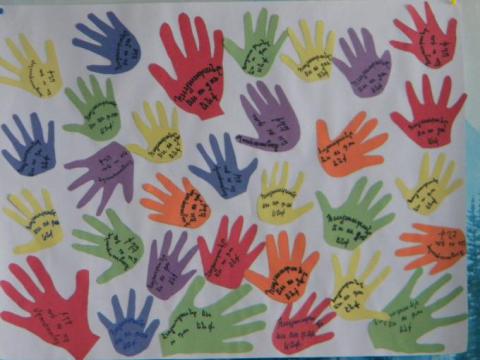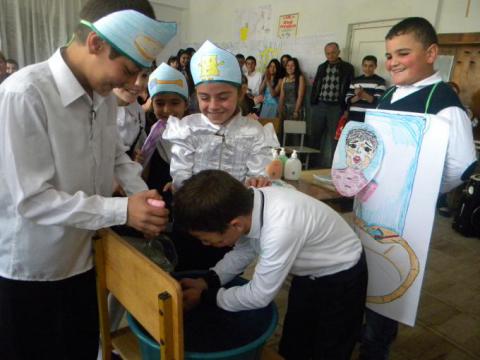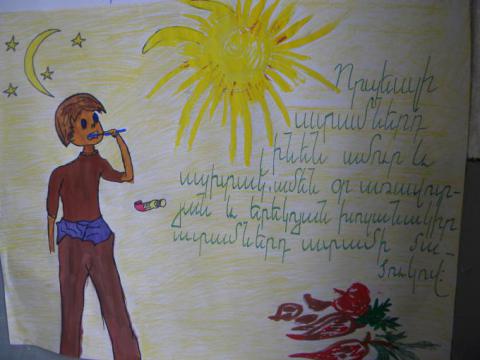 Armenia
Armenia
Languages
Viva Hygiene! Celebrating Handwashing Day in Armenia
In celebration of Global Handwashing Day on October 15, 2015, Save the Children presented various events in five target rural schools in Lori and Gegharkunik provinces in Armenia. Involving more than 400 children, teachers and parents, the main purpose of the events was to increase awareness of children and adults on essential hygiene and promotion of healthy behaviors. The events were run by children in the framework of the Action for Child Health and Education project, by Child-to-Child (CtC) groups. Children created poster competitions, chalk painting, theater and dance performances and demonstrations of how to correctly wash hands.
In Dprabak community of Gegharkunik, children ages 6 to 14 organized community event devoted to Global Handwasing Day. Teachers, parents, siblings and grandparents attended the event, held in the local school where Save the Children has established an inclusive preschool education center. From youngest to oldest, each group used their skills and abilities to present some kind of information about handwashing, health or hygiene best practices. The youngest children presented a short play in which one child’s face was so dirty his friends did not recognize him. He didn’t want to wash, but no one wanted to play with him, and finally one of his friends brought a mirror – he didn’t even recognize himself! Finally his friends convinced him to wash and each helped him using hygiene supplies such as soap, shampoo, toothbrush and comb. In the end his face was scrubbed red-clean, and his friends were willing and happy to play together!
Not only did viewers learn the importance of washing and how to do it correctly, older students also taught the audience about different holidays related to water and washing. The Armenian water national festival is called Vardavar, and all the families have fond memories of it. Especially for the older children, CtC approach provided a platform to speak up about important issues in their community.
In Dprabak as in other target communities, Save the Children used the existing structure of Student Councils and actively engaged students in planning, implementation and monitoring of CtC activities. School students, acting as agents of change, educate their families and peers about hygiene and healthy lifestyle.


